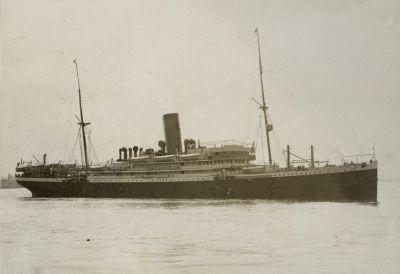This month we are going to answer some of the most frequently asked questions in Italian American genealogy. I hope you find the answers useful in your own search for your family history.
What is the best website to find Italian records?
The Portale Antenati or Ancestors Portal hosted by the Italian National Archives is by far the best website to find Italian records. At the time of this publication, it contains over 100 million records from 65 archives. Here you can find digitized images of Italian civil birth, death, and marriage records from 1806 to the 1930s. Availability of records for a particular town varies based on whether the records survived or were ever recorded. The digitation process is ongoing, and more records are continuously being added. You can find the records at www.antenati.san.beniculturali.it/.
My surname has been “Americanized,” how do I find my original Italian surname?
Name changes usually occurred within the first few years of an immigrant’s arrival, so your best source for finding an original Italian surname will be on the earliest official records, such as ship manifests, petitions for naturalization, marriage records, or the earliest census records (provided that the census taker could understand your ancestor’s Italian accent and recorded the name correctly). Typically, the oldest and most accurate of these records is the ship manifest from their journey to America. These records were created in Italy by Italian speaking ship officials. Therefore, they are fairly accurate in recording an immigrant’s name. Once you know the original surname, it will open the door for you to continue your research in your ancestral village. Keep in mind that if the current surname has the letters of J, K, W, X or Y, it is not likely to be an original Italian surname as these letters are not part of the Italian alphabet. However, there are always exceptions, especially if the surname is derived from another language but used by an Italian family.
How do I find out which ship my ancestor sailed on to America?
If you know your ancestor’s original Italian name, you can try searching for their passenger list at these websites:
www.familysearch.org (free), www.libertyellisfoundation.org (free) or www.ancestry.com (subscription or available at many libraries). If you are not getting any results at these sites, try an advanced search engine created by Steve Morse. His search pages allow you to search by ancestral town, year of arrival, age of arrival, and other bits of information that can help narrow your search. www.stevemorse.org.
How do I find my ancestors’ naturalization records?
For an ancestor who became a citizen before 1906, he or she would have filed an intent (known as “first papers”) with the local court where he or she was domiciled. After meeting a five-year U.S. residency requirement, the applicant could then complete a petition (known as “second papers” or “final papers”). You will most likely find these records in the archives of county court houses, not at a federal government archive. Many of these records have been digitized; search www.familysearch.org (free). If you know your ancestor naturalized prior to 1906 and can not find the records online, you will need to contact the county records office for assistance.
Beginning in 1906, the naturalization process was federalized with records kept at the court and a duplicate copy sent to the Federal Naturalization Service (now USCIS). Between 1906-1952, an applicant filed a Declaration of Intent. Then after a period of two to seven years, the applicant filed their Petition for Naturalization with the court. Some of these records are available online at www.familysearch.org , www.ancestry.com , or www.fold3.com but most are located at a National Archives Records Administration (NARA) facility or the USCIS. The records held by NARA and USCIS are not digitized or accessible online. To access to them you need to visit a NARA facility or write a request for research or copies. You can find information about available records at www.archives.gov or www.USCIS.gov.
Will a DNA test tell me which village my ancestors came from?
The consumer DNA tests currently on the market do not provide this level of granularity. However, they can be used as tools to help you pinpoint an ancestral village through their ethnicity estimates but more likely through your “cousin” matches. When you take a DNA test you get two main types of results: an estimate of your ethnicity and matches to others with whom you share DNA, making them your genetic family.
DNA results reach back to your ancestors over approximately the last 500 years. Your ethnicity results will be based on the bits of DNA you have inherited from some of your ancestors. Remember, these estimates are derived by proprietary algorithms used by the testing companies and are based on “reference populations” of folks who they have tested around the world. As more samples are added to the reference populations, results including yours will be updated and refined but they are not yet 100 percent accurate. Ethnicity estimates are interesting to help identify a major region of origin, but it is the “cousins” who show up as matches where you will be able to pinpoint more accurately where your more recent ancestry comes from. For example, I can trace my paternal line back to two Italian villages for 300 years. My grandfather came from Pietrabbondante and my grandmother came from Castiglione di Carovilli. By looking at a particular cousin match and who else matches to me and that cousin, I can tell which village their ancestral roots are in, either grandpa’s or grandma’s. So, if you have cousin matches and those cousins have done extensive family tree research like I have, you can use their results to help you identify where in Italy your shared DNA originated!



